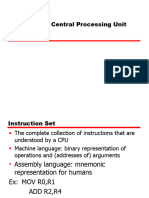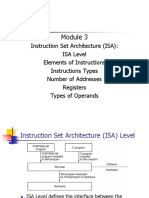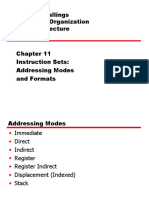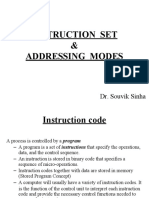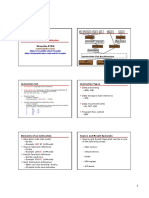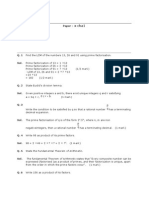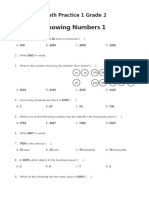0% found this document useful (0 votes)
46 views108 pagesMachine Language
The document provides an overview of machine instructions, detailing their role in processor operation and the structure of instruction sets, including elements like operation codes and operands. It discusses various data types, addressing modes, and instruction types, as well as the design considerations for instruction sets and architectures. Additionally, it covers specific architectures such as Pentium and ARM, along with examples of instruction formats and the 8085 microprocessor's instruction set.
Uploaded by
mejuliajCopyright
© © All Rights Reserved
We take content rights seriously. If you suspect this is your content, claim it here.
Available Formats
Download as PDF, TXT or read online on Scribd
0% found this document useful (0 votes)
46 views108 pagesMachine Language
The document provides an overview of machine instructions, detailing their role in processor operation and the structure of instruction sets, including elements like operation codes and operands. It discusses various data types, addressing modes, and instruction types, as well as the design considerations for instruction sets and architectures. Additionally, it covers specific architectures such as Pentium and ARM, along with examples of instruction formats and the 8085 microprocessor's instruction set.
Uploaded by
mejuliajCopyright
© © All Rights Reserved
We take content rights seriously. If you suspect this is your content, claim it here.
Available Formats
Download as PDF, TXT or read online on Scribd
/ 108








